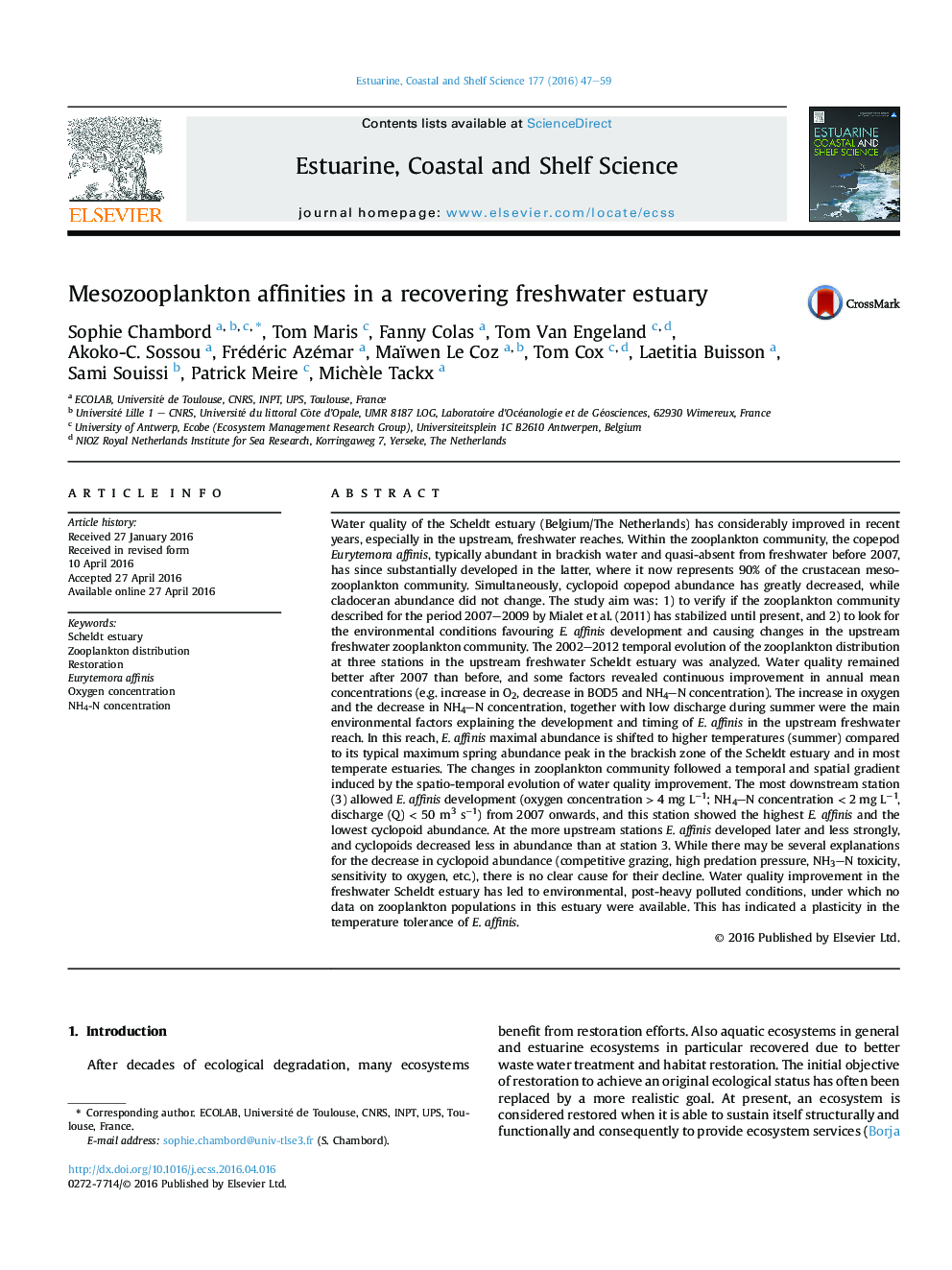| کد مقاله | کد نشریه | سال انتشار | مقاله انگلیسی | نسخه تمام متن |
|---|---|---|---|---|
| 4539216 | 1626622 | 2016 | 13 صفحه PDF | دانلود رایگان |
Water quality of the Scheldt estuary (Belgium/The Netherlands) has considerably improved in recent years, especially in the upstream, freshwater reaches. Within the zooplankton community, the copepod Eurytemora affinis, typically abundant in brackish water and quasi-absent from freshwater before 2007, has since substantially developed in the latter, where it now represents 90% of the crustacean mesozooplankton community. Simultaneously, cyclopoid copepod abundance has greatly decreased, while cladoceran abundance did not change. The study aim was: 1) to verify if the zooplankton community described for the period 2007–2009 by Mialet et al. (2011) has stabilized until present, and 2) to look for the environmental conditions favouring E. affinis development and causing changes in the upstream freshwater zooplankton community. The 2002–2012 temporal evolution of the zooplankton distribution at three stations in the upstream freshwater Scheldt estuary was analyzed. Water quality remained better after 2007 than before, and some factors revealed continuous improvement in annual mean concentrations (e.g. increase in O2, decrease in BOD5 and NH4N concentration). The increase in oxygen and the decrease in NH4N concentration, together with low discharge during summer were the main environmental factors explaining the development and timing of E. affinis in the upstream freshwater reach. In this reach, E. affinis maximal abundance is shifted to higher temperatures (summer) compared to its typical maximum spring abundance peak in the brackish zone of the Scheldt estuary and in most temperate estuaries. The changes in zooplankton community followed a temporal and spatial gradient induced by the spatio-temporal evolution of water quality improvement. The most downstream station (3) allowed E. affinis development (oxygen concentration > 4 mg L−1; NH4N concentration < 2 mg L−1, discharge (Q) < 50 m3 s−1) from 2007 onwards, and this station showed the highest E. affinis and the lowest cyclopoid abundance. At the more upstream stations E. affinis developed later and less strongly, and cyclopoids decreased less in abundance than at station 3. While there may be several explanations for the decrease in cyclopoid abundance (competitive grazing, high predation pressure, NH3N toxicity, sensitivity to oxygen, etc.), there is no clear cause for their decline. Water quality improvement in the freshwater Scheldt estuary has led to environmental, post-heavy polluted conditions, under which no data on zooplankton populations in this estuary were available. This has indicated a plasticity in the temperature tolerance of E. affinis.
Figure optionsDownload high-quality image (241 K)Download as PowerPoint slide
Journal: Estuarine, Coastal and Shelf Science - Volume 177, 5 August 2016, Pages 47–59
